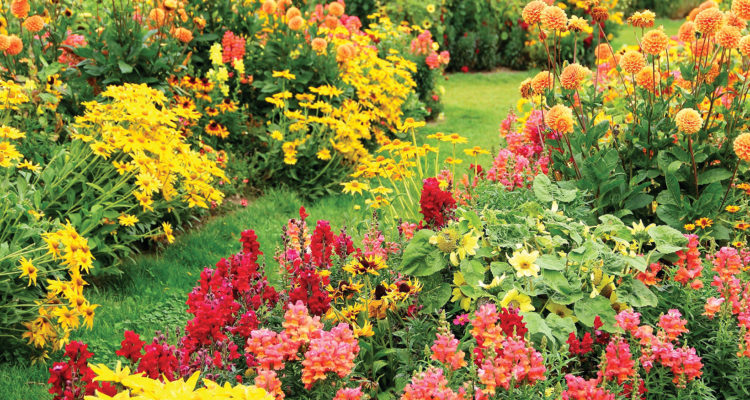Keep those garden tools handy as Fall is planting time!
Crisp mornings and Autumn’s vibrant colors mark our change of seasons as Mother Nature shows off before preparing for the cold weather that lies ahead. You too should be preparing your yard and garden so come Spring, it will be full of lush, green grass and flourishing trees and shrubs.
We visited with Jonah Nelson, Horticulturist and store manager of Family Tree Nursery in Overland Park to get the skinny on what needs our attention this fall.
KCH&S: What are the big benefits of fall planting?
FAMILY TREE: Fall is the best season to plant the vast majority of plant material due to the soil temperatures that have been warmed from the summer sun. Typically, the air temperature cools in the September evenings, allowing plants to focus their energy on developing a strong root system in the warm soil while tops have reduced stress, as a strong root system is the main factor in successful establishment of plant material. In addition, the gentler autumn rainfall is more easily absorbed than the gully washing rains that we receive in spring. However, it is always important to water newly planted trees, shrubs, and perennials thoroughly when planted and weekly until dormancy for best results in establishment.
KCH&S: Is there a perfect window for fall planting?
FAMILY TREE: Preferred fall planting is September to mid-November. That said, it is still fine to plant most trees and shrubs even when dormant. Installations can be done every day that the ground is not frozen. Trees and shrubs that are planted dormant actually have a great opportunity to root and establish with the natural season as the ground temperatures warm in spring.
KCH&S: Is it really better to plant grass in the Fall?
FAMILY TREE: September is the best month of the year to seed your lawn as it is the natural time that the native prairie begins to drop its seed and begins to germinate and establish. It is so important to work in conjunction with the natural cycles of nature to ensure strong establishment. WATERING: Once your lawn is seeded, the seed cannot establish itself without proper watering. You must keep it wet until it has been mowed twice. The initial stage of germination is the most critical as it may need watered 2-3x/day. Once it has germinated it is common practice to reduce watering to about 1x/day, soaking it longer so that it will draw the roots deeper. FERTILIZING: At Family Tree we recommend putting down a fall rejuvenator/seed starter fertilizer at the time of seeding to help give the young seed all the nutrients it needs to thicken and spread. After one month of seedling establishment, a winterizer fertilizer (high nitrogen) should be applied. It is best to make two separate applications of the winterizer fertilizer (high nitrogen) one month apart. This is done so that the new grass can store maximum carbohydrates going in to winter dormancy. Even when the lawn appears to be dormant as the cold air and short days naturally suppress the grass plants ability to vegetatively grow, it is 100% still actively growing roots and thickening at the base.
KCH&S: How much should you water trees and plants in the Fall and Winter?
FAMILY TREE: It is critical to water trees, shrubs, and perennials when we do not receive snow or rainfall. When water freezes around the root system, the ice that forms on the roots insulates and keeps the root system hydrated as the dry winter winds blow that can desiccate the foliage and stems of dormant plant material. Plants lose water throughout the winter from the temperature swings and the wind, which is why it is imperative to hydrate them once or twice a month when we do not receive regular rainfall.
KCH&S: Is there still a good selection of plants at this time of year?
FAMILY TREE: Yes! Fresh stock arrives the first week of September from our local production farm and other farms. Along with fresh trees and shrubs, the stores are filled with a vast array of perennials, mums, asters, pansies, and a great selection of fall annuals!






